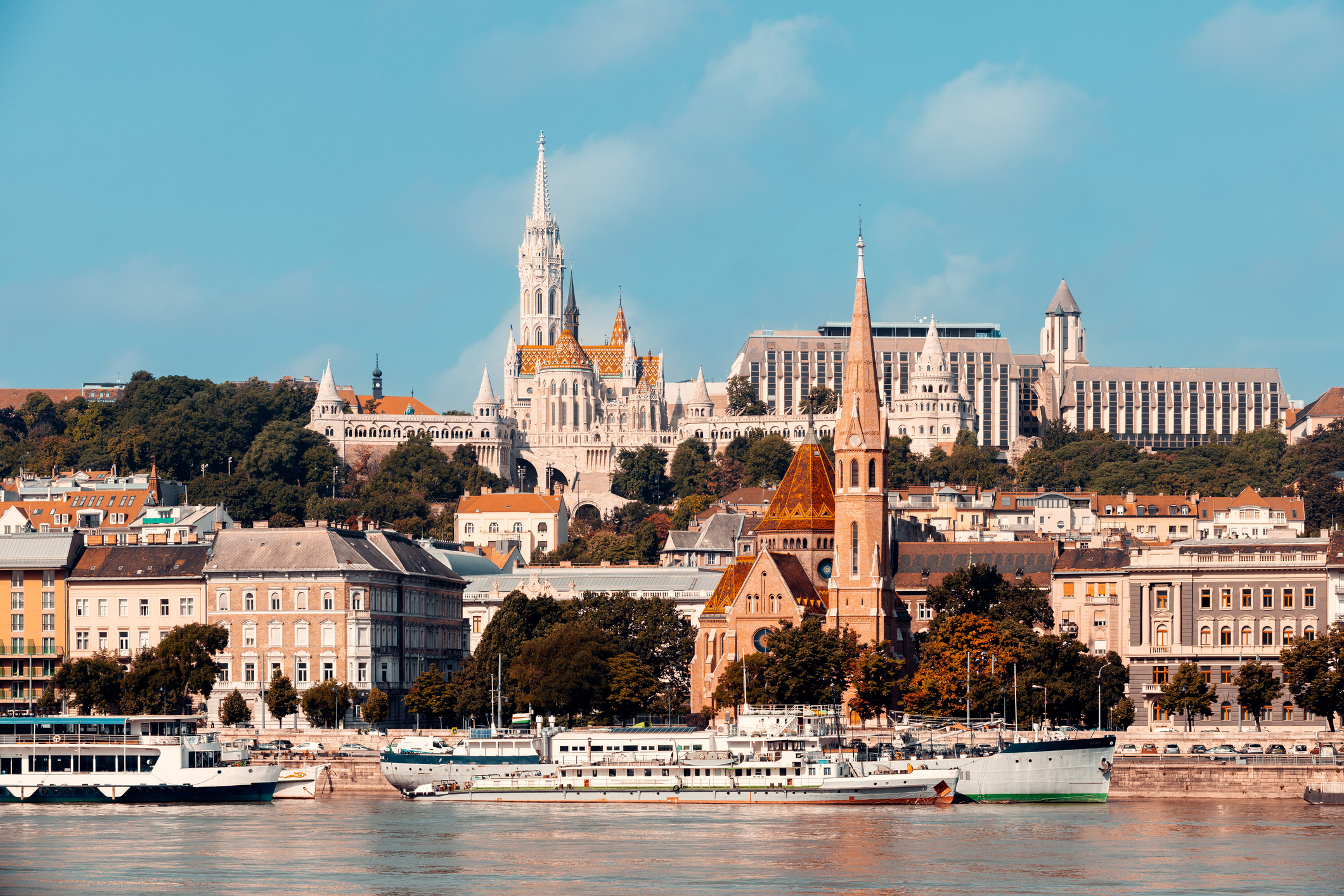Take a Museum Curator on Your Next Trip
Museum-sponsored trips give you a world of knowledge, particularly when a curator tags along.
Is your idea of a dream vacation sipping wine in a 17th-century palazzo in Italy with a contessa? Or perhaps you're tantalized by a tour of Cape Canaveral, Fla., with Mercury astronaut Wally Schirra. How about snorkeling in the Galápagos Islands alongside penguins? These are among the experiences recounted by travelers who have taken museum-sponsored vacations. Trips organized by museums, which are often led by their curators, provide the access and depth of information that most commercial tour packages cannot match. Some of the most renowned museums are leaders in the educational-travel field, but many smaller museums offer travel programs as well. The American Museum of Natural History in New York City runs about 55 trips a year, Chicago's Field Museum leads about eight tours a year, and the Smithsonian Institution sponsors about 250 trips a year. In most cases, you must become a museum member to take a trip, but the fee is usually nominal.
| Row 0 - Cell 0 | Slide show: View a sampling of museum-sponsored adventuresnbsp; |
Educational trips are among the fastest-growing segments of the tourism industry. And they're poised for further growth as affluent and adventure-seeking baby-boomers approach retirement. "Retirees are our main market," says Theresa Payne, special programs coordinator for the Santa Barbara Museum of Art (www.sbmuseart.org/travel; 805-884-6476), which has an annual 25-trip travel program encompassing culinary, culture and wildlife themes.
You can choose a museum trip that fits any passion, including archeology, military history, art, science and wine. Tour types vary: You can trek through the Andes or the Grand Canyon, take a motor coach to Civil War sites or through the Dordogne, cruise along the Yangtze or the Columbia rivers, or take city tours of Boston or Moscow.

Sign up for Kiplinger’s Free E-Newsletters
Profit and prosper with the best of expert advice on investing, taxes, retirement, personal finance and more - straight to your e-mail.
Profit and prosper with the best of expert advice - straight to your e-mail.
The trips tend to be expensive, often costing $5,000 to $8,500 a person, not including airfare, for a trip lasting ten to 14 days. "We have a wide price range. Some trips are $3,000, and some are $48,000," says Alicia Stevens, director of the American Museum of Natural History's Discovery Tours (www.amnhexpeditions.org; 800-462-8687). For $37,900, you can sign up for a September program called "Earth Orbit," which includes behind-the-scenes tours of space facilities in the U.S., Russia and Kazakhstan, meetings with astronauts and cosmonauts, and a chance to try out a zero-gravity simulator.
The prices usually include one or two experts, local guides, four- or five-star hotels, meals, educational materials, and sometimes even helicopter travel. "The creature comforts are very dependable," says Gretchen Dumler, 68, of New York City, who has gone on nine trips with the American Museum of Natural History. "You may be sleeping in a glorified tent in Africa, but it will be very comfortable. And dinner will be super, with great wine."
Many museum-sponsored tours are accompanied by their own curators, and the museums usually plan the trips based on their staff's scientific and cultural expertise. "Our mission is to showcase the work of our scientists," says Steve Hines, director of Field Museum Tours (www.fieldmuseum.org/membership; 800-811-7244). Amy Kotkin, director of Smithsonian Journeys (www.smithsonianjourneys.org; 877-338-8687), says she seeks out experts who have detailed knowledge of a destination's culture, from showing travelers in India how to tie a sari to discussing food preparation while the tour group is eating breakfast. "Our number-one priority is education, so we painstakingly choose our study leaders," she says.
These curators and scientists have developed relationships with experts around the world, so travelers often have access to places off the beaten path. "In Ethiopia, the Lucy bones get pulled out of the vault for our group tours," Stevens says, referring to bones believed to be from the first human.
The programs often avoid tourist traps, instead focusing on in-depth experiences. For instance, the Smithsonian has an upcoming tour of Italian car-design factories, such as Alfa Romeo and Ferrari, which are usually off-limits to the public.
Dumler recalls one trip to Russia with the American Museum of Natural History. "At the Hermitage Museum in St. Petersburg, where people wait in line for hours, our group sailed in before opening time," she says. After her husband died, she continued to travel with the museum, calling the trips to faraway places "great therapy during the mourning process." She's going to Micronesia in the fall.
Mikki Weithorn, 71, and her husband, Stanley, 81, who live in both Scottsdale, Ariz., and New York City, have gone on three museum trips-to Cuba, Brazil and Argentina-with the Arizona State University Art Museum. "I don't like group tours because there can be too many personalities, like summer camp," she says. "But we're art collectors, and the museum people are so knowledgeable." On the Cuba trip, the Weithorns visited artists" homes and studios and bought art directly from them.
Touring private art collections and galleries is one of the great appeals of the tours. Joann Chambers, 62, of Albany, Ore., and her husband, Wayne, have gone on nine Smithsonian tours, including trips to Egypt, Jordan and Tanzania. "They take care of you like you are family," she says. In Egypt, the country's director of antiquities gave the group permission to go through a locked gate and touch the Sphinx.
Because these tours generally attract an older crowd, Smithsonian's Kotkin says the best tours will describe in advance any "mobility challenges, such as cobblestone streets and many steps to climb." Hines, of the Field Museum, says that for the Peru trip he warns travelers of the high altitude and suggests they seek a doctor's okay before signing up.
Stevens, of the American Museum of Natural History, says each trip offers a range of options based on physical stamina. "The adventure trips tend to be more physically active. In the Galápagos, we have subgroups where some people choose to go on a diving boat for the day, and others choose the more relaxing sightseeing boat," she says.
What to Look For
When choosing a museum tour, keep the following tips in mind.
- Check out specialty museums. If you have a specific scientific or cultural interest, see what specialized museums offer. For example, museums focusing on Asian art or Jewish history may have trips suited to your passion.
- Look for experience. Educational travel is a growing niche. The most established museums are likely to have more expertise than some newer entrants.
- Do your research. Because a single list for museum-sponsored travel programs is hard to come by, check the Web sites of many museums and then call the museums directly.
- Read the fine print. If a trip piques your interest, ask for a detailed itinerary. Ask whether the institution created the trip itself or is using an off-the-shelf program developed by an outside educational-travel tour operator. Make sure the trips include stops not available on the tourist circuit, such as visits to private homes and galleries or after-hours tours of museums, cathedrals and other attractions. Ask about the study leaders' credentials.
Pasta or Picchu?
If you're thinking of taking a museum-sponsored tour in the coming months, here are just a few of the trips you can choose from.
In September, the Smithsonian offers "Joys of the Italian Table," led by Washington, D.C., restaurateur Francesco Ricchi, whose family owns restaurants in Florence. The nine-day trip ($4,900 plus airfare) includes a polenta-making demonstration, as well as visits to a Parmesan-cheese factory and wineries in the Chianti region.
In mid September, Field is sponsoring "Empire of the Andes: An Exploration of Peru," led by two curators who specialize in anthropology and South American archeology. The 16-day trip ($7,895 plus airfare) includes exploring the ruins of Machu Picchu, meetings with archeologists and a private party at Lima's Rafael Larco Herrera Museum.
In October, the Santa Barbara Museum of Art is leading a seven-day luxury cruise of "Island Life in Ancient Greece," with stops in Delos, the birthplace of Artemis and Apollo; the black cliffs of Santorini; and the ancient cities of Ephesus and Istanbul in Turkey. The cost, not including airfare, ranges by accommodation from $3,455 to $6,355.
Get Kiplinger Today newsletter — free
Profit and prosper with the best of Kiplinger's advice on investing, taxes, retirement, personal finance and much more. Delivered daily. Enter your email in the box and click Sign Me Up.
-
 This One Area of Americans' Retirement Readiness Gets a Bad Grade
This One Area of Americans' Retirement Readiness Gets a Bad GradeMillions of Americans score poorly on retirement readiness due to this Achilles' heel. Are you prepared?
By Christy Bieber Published
-
 REAL ID Deadline: What You Need by May 7, 2025
REAL ID Deadline: What You Need by May 7, 2025Worried about needing a REAL ID soon? Learn more about the requirement, how to get your ID and valid REAL ID alternatives.
By Laura Gariepy Published
-
 Roth IRA Contribution Limits for 2025
Roth IRA Contribution Limits for 2025Roth IRAs Roth IRA contribution limits have gone up. Here's what you need to know.
By Jackie Stewart Last updated
-
 Four Tips for Renting Out Your Home on Airbnb
Four Tips for Renting Out Your Home on Airbnbreal estate Here's what you should know before listing your home on Airbnb.
By Miriam Cross Published
-
 Five Ways to a Cheap Last-Minute Vacation
Five Ways to a Cheap Last-Minute VacationTravel It is possible to pull off a cheap last-minute vacation. Here are some tips to make it happen.
By Vaishali Varu Last updated
-
 Best Places to Visit Where the Dollar Is Strong
Best Places to Visit Where the Dollar Is StrongFrom the Americas and Europe to Africa and Asia, we list the 10 best places to travel to where the U.S. dollar is the strongest.
By Quincy Williamson Last updated
-
 24 Best Travel Websites and Apps to Find Deals and Save You Money
24 Best Travel Websites and Apps to Find Deals and Save You MoneyTravel Use Kiplinger's guide to the best travel websites and find discounts and deals so you can vacation without breaking the bank.
By Rivan V. Stinson Last updated
-
 How to Figure Out How Much Life Insurance You Need
How to Figure Out How Much Life Insurance You Needinsurance Instead of relying on rules of thumb, you’re better off taking a systematic approach to figuring your life insurance needs.
By Kimberly Lankford Last updated
-
 Amazon Big Deal Days Is Coming! We’ve Got All the Details
Amazon Big Deal Days Is Coming! We’ve Got All the DetailsAmazon Prime To kick off the holiday season with a bang, Amazon Big Deal Days runs Tuesday, October 8 and Wednesday, October 9.
By Bob Niedt Last updated
-
 How to Shop for Life Insurance in 3 Easy Steps
How to Shop for Life Insurance in 3 Easy Stepsinsurance Shopping for life insurance? You may be able to estimate how much you need online, but that's just the start of your search.
By Kaitlin Pitsker Last updated